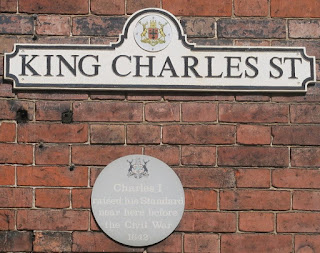Newark's Defences - a town under siege

The ECWtravelogue has visited Newark many times. The King, Queen Henrietta Maria, Prince Rupert all visited; it is home to the National Civil War Centre ; and is the location of possibly the best preserved Civil War earthwork - The Queen's Sconce . So why does it deserve another blog entry? In a word: Clampe's Plan ( but that's two! ). Clampe drew a plan of the Royalist defences of Newark and the Parliamentarian, and Scots siege lines. There's also another, slightly different, later version of the map: Buck's Map, which is held in the Royal Collection and can be viewed online here . The Queen's Sconce survived, did anything else? Clampe's Plan I've seen photographs of other earthworks in Newark, but no locations for them. A little sleuthery comparing Nottingham's register of ancient monuments, and Historic England's records has resulted in an extensive list of sites. Unfortunately, the locations are so complex that they don't fit my normal ...




